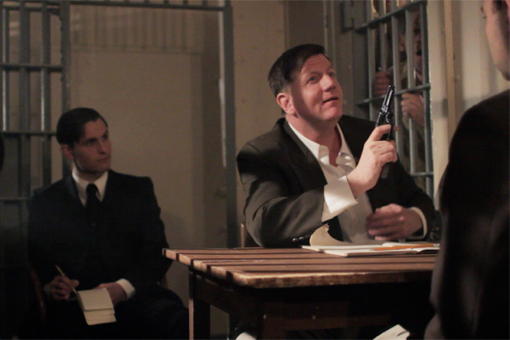By Natalia Lusinski · January 26, 2013

This poignant documentary recounting the shooting of 16-year-old Larry King by his classmate, just-turned-14-year-old Brandon McInerney, does an excellent job at showing how this singular event affected hundreds of people and opens viewers’ minds from both sides: the victim’s and the killer’s.
Larry had allegedly been gay and an open cross-dresser, wearing high heels and makeup to school in the weeks before the shooting. After Larry gives Brandon a Valentine in front of all his friends, Brandon retaliates – by coming to school the next day, entering the computer lab, and shooting Larry in front of their Oxnard, California classmates.
Larry lives… for a few days. But when he dies, the primary question becomes: Should Brandon be tried as a juvenile, or as an adult?
Marta Cunningham’s film goes into depth about the way Larry grows up versus the way Brandon does – Larry going from one foster home or care facility for abused children to the next, Brandon growing up with a clean record, excelling in school, and seeing his mom on drugs and his dad drinking excessively and even shooting his mother once. (She lives.) The gun Brandon uses to shoot Larry is from his grandfather’s house, where he is living at the time.
The film shows thoughts about Larry and Brandon and the shooting from several viewpoints, legal and not, including: Larry’s ex-teacher (who is fired after the shooting, as she had been supportive of Larry’s lifestyle and once gave him a dress, one her daughter had previously worn); Larry’s friends; Larry’s last legal guardian; police officers; the jurors; the district attorney; Brandon’s mother; his lawyers; and his girlfriend (who still hopes to marry Brandon one day and reads parts of his love letters from prison on camera). Newspaper and media clips are also shown, everything from the local paper to The Ellen DeGeneres Show, Ellen encouraging people to stop hate crimes. Meanwhile, while the legal system decides whether or not to treat Brandon as an adult, which would condemn him to life in prison, Brandon supporters wear bracelets reading “Save Brandon.”
As someone who has volunteered with juvenile delinquents at boys’ prisons, I could understand how Brandon’s family empathizes for his situation and has faith that he will change and lead a crime-free life, yet my heart breaks for Larry and his loved ones. He is gone – yet his essence lives forever on Valentine Road, where Larry is buried. This is a poignant, moving documentary which explores the issue of gun violence today – though, often, we do not see the scope of how many people are affected by one bullet. Especially in today’s gun climate, Valentine Road is not to be missed. (Just have Kleenex at the ready.)